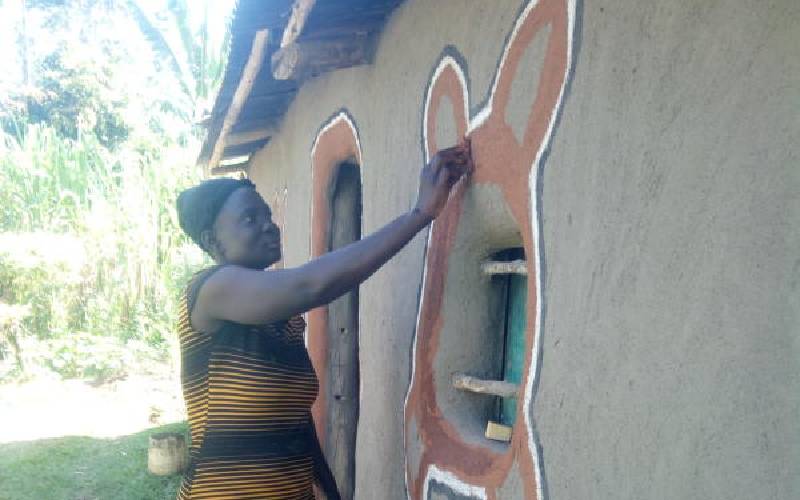×
The Standard e-Paper
Stay Informed, Even Offline

Rose Wumba,42, from Mukava village in Malava, Kakamega County busy decorating her house ahead of Christmas. She says the culture has helped give the people of Western a unique identity but regrets that the tradition is fading away.
Once a common practice in western Kenya, the tradition of smearing houses with special clay and drawing patterns on the mud walls is fading away.